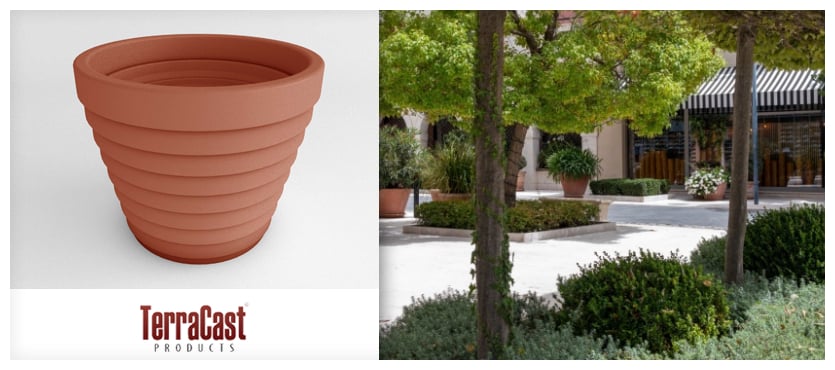Urban areas are often perceived as concrete jungles devoid of natural wildlife. However, with some thoughtful designing and strategic use of greenery, cities can become thriving habitats for birds, insects, and even small animals. Resin planters can play a pivotal role in this transformation, as they offer versatile and durable solutions for urban biodiversity efforts. By incorporating more plants into cityscapes, resin planters help create environments that attract and sustain local wildlife, making cities more livable for both humans and animals.
The Role of Plants in Urban Biodiversity
Plants are essential for fostering biodiversity in cities. They provide food, shelter, and breeding grounds for various species. While natural habitats may be scarce in urban settings, well-placed greenery can significantly contribute to the survival of local wildlife populations. By incorporating a range of plants in urban areas, from small shrubs to flowering species, cities can support pollinators like bees and butterflies, provide nesting spaces for birds, and offer cover for small mammals.
In urban environments, resin planters are an excellent tool for introducing these diverse plants. Their durability and flexibility make them ideal for both small balconies and large public spaces, transforming areas into green oases. Additionally, because resin is resistant to harsh weather conditions, it ensures that the plants can thrive year-round, further benefiting local wildlife.
Benefits of Resin Planters in Urban Settings
Resin planters offer unique advantages when it comes to encouraging biodiversity in cities:
- Durability: Resin is highly resistant to the elements, including extreme heat, cold, and UV rays, ensuring that planters maintain their integrity in urban environments.
- Low Maintenance: Unlike traditional materials like wood or clay, resin planters require minimal upkeep, making them a cost-effective option for cities and businesses.
- Lightweight: Resin planters are easier to move than concrete or metal planters, allowing for greater flexibility in placement and design.
- Eco-Friendly Options: Many resin planters are made from recycled materials, aligning with sustainability goals and minimizing environmental impact.
These benefits make resin planters a practical and eco-friendly solution for urban biodiversity projects. Whether placed on rooftops, sidewalks, or in public parks, they serve as durable, attractive containers for greenery that supports local wildlife.
Attracting Pollinators with Resin Planters
One of the simplest ways to support urban biodiversity is by attracting pollinators. Bees, butterflies, and other insects are crucial for the health of ecosystems, yet their populations are declining in many parts of the world. Resin planters filled with flowering plants like lavender, echinacea, or milkweed can attract these vital species to urban areas. By placing these planters in community gardens, office complexes, and residential areas, cities can create small but significant habitats for pollinators.
Pollinator-friendly plants thrive in resin planters due to the material’s insulation properties, which protect roots from temperature extremes. Resin’s ability to retain moisture while draining excess water also ensures that plants remain healthy, providing a consistent food source for pollinators throughout the season.
Creating Bird-Friendly Urban Spaces
Birds are another essential part of urban biodiversity. They help control insect populations, disperse seeds, and add a layer of beauty to the cityscape with their presence. Resin planters can be used to grow plants that attract birds, such as berry-producing shrubs or nectar-rich flowers. By strategically placing planters on rooftops, balconies, and public spaces, cities can create bird-friendly environments in the middle of bustling urban areas.
For example, species like the American Robin or House Sparrow can benefit from planters with trees and shrubs that offer cover, nesting sites, and food sources. Incorporating a variety of plants that bloom at different times of the year can also ensure that birds have access to resources year-round.
Supporting Small Mammals and Insects
In addition to birds and pollinators, small mammals and insects also play important roles in urban ecosystems. By using large resin planters to grow bushes, grasses, and groundcover, alongside local trees, cities can create micro-habitats for creatures like squirrels, chipmunks, and beneficial insects such as ladybugs and ants. These creatures help maintain the balance of urban ecosystems by controlling pest populations and supporting plant health through pollination and seed dispersal.
Resin planters, being versatile in size and style, allow urban designers to tailor green spaces to support a variety of species. Large commercial planters in public spaces can accommodate small trees and dense shrubs, while smaller planters can create pockets of greenery in narrow urban corridors or residential patios.
Resin Planters as Key to Urban Biodiversity
Resin planters provide a unique solution for enhancing biodiversity in urban settings. Their durability, flexibility, and low-maintenance qualities make them ideal for creating green spaces that attract and sustain wildlife. From pollinators and birds to small mammals and insects, the integration of plants in resin containers can help cities create more vibrant, diverse ecosystems even in the heart of urban landscapes. By utilizing these eco-friendly and versatile products, urban planners and businesses can contribute to the revitalization of natural habitats, making cities more livable for all species.
For more information on how TerraCast® can help you implement resin planters in your urban biodiversity projects, feel free to contact us.

